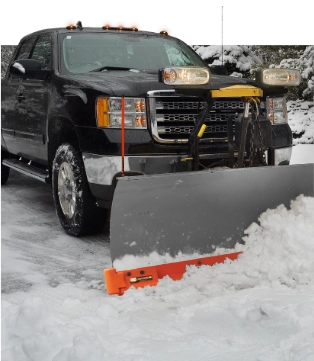Your Recent Search:
Snow plow blade systems & guards that last 2x-10x longer
Engineered to wear evenly and last longer, you'll stop throwing out unused steel and stay on the road when your contracts need you.
Find the perfect fit for your plow
We have products to fit over 80 different plows. Find the perfect setup for you.
Or Shop By

Longer blade life matters
Get more time on the road, more time building your business & less time thinking about your edge. You shouldn’t be spending time changing blades. Spend your time on the things that matter to you and trust that your blade is ready when you are needed.
Customer Spotlight

Dan Zuber, @zuperman
“This product has been a game changer for my plowing operations. Winter equipment edges have saved my company enough money over the years in OEM replacements to pay for a new plow. I wouldn’t have any other edges period. Thanks for everything! Cheers to many more years!!”

Matt Wittum, Highway Super Intendant
Town of Linn, Wallsworth County, Wisconsin
“You make great products. I’ve used your edges for 15 or so years. I only had one issue and you warrantied it no question. I love your blade guards too… they are on every plow in my fleet.”

Phil Hicks Sweeping and Plowing
“I thought they were a little pricey until I received them and was amazed at how heavy-duty they were. They are definitely worth the money! I could not believe how well they fit! I was burning through 1 cutting edge a year, as thick and heavy duty these are I doubt I’ll need a cutting edge for 3 or 4 years.”
Dan Zuber, @zuperman
“This product has been a game changer for my plowing operations. Winter equipment edges have saved my company enough money over the years in OEM replacements to pay for a new plow. I wouldn’t have any other edges period. Thanks for everything! Cheers to many more years!!”
Matt Wittum, Highway Super Intendant
Town of Linn, Wallsworth County, Wisconsin
“You make great products. I’ve used your edges for 15 or so years. I only had one issue and you warrantied it no question. I love your blade guards too… they are on every plow in my fleet.”
Phil Hicks Sweeping and Plowing
“I thought they were a little pricey until I received them and was amazed at how heavy-duty they were. They are definitely worth the money! I could not believe how well they fit! I was burning through 1 cutting edge a year, as thick and heavy duty these are I doubt I’ll need a cutting edge for 3 or 4 years.”
Who we are
Winter Equipment Company is North America’s leading manufacturer of the industry’s highest quality snow plow blades, plow guards, snow plow wear parts, & gravel road maintenance wear parts for over 30 years. Our products are backed by our unmatched 100% satisfaction guarantee. That means we will work with you until you are satisfied.
Subscribe to our blog
Get notified when we post a new article
"*" indicates required fields




























